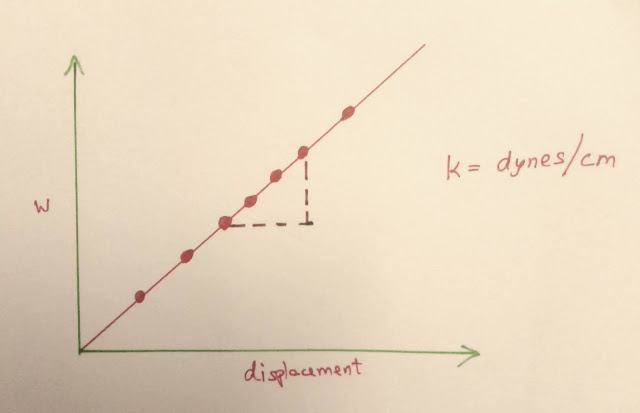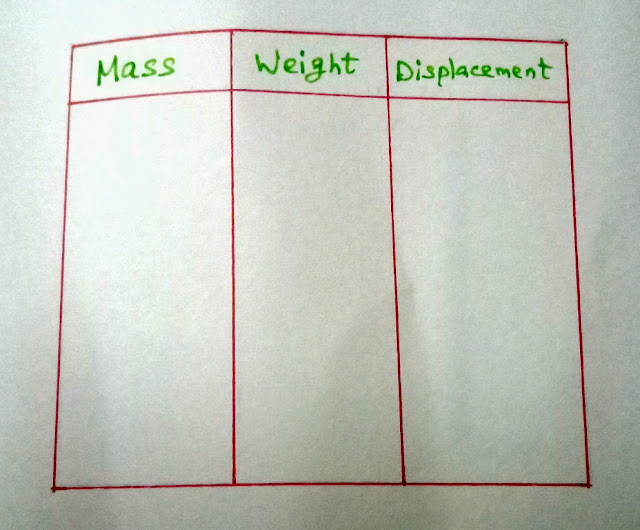Hooke's Law Spring Constant Experiment for Science Fair Projects for 9th Grade
It is the experiment of spring and mass. This concept first reported by the famous British scientist, Sir Robert Hooke. This fundamental law is a useful concept of engineering. It is called Hooke's law. Force or wight is directly proportional displacement. The proportionality constant is called spring constant. In this post, we discuss Hooke's law with different length and diameter of spring, stress and strain concepts for science fair projects for 9th grade.
 |
| Spring System - Hooke's Law |
Hooke's Law explanation:
In physics, every action there is an opposite reaction. Action is nothing but stress applied to any system. Thus, the reaction is reverse stain happen in the system. This is the fundamental rule of nature.
Hooke's is applicable to the spring system. You may ask, why is that system only? why not for a pendulum? because the pendulum is the swinging system with respect to weight at the end. Springs are the best example of dynamical vibration with respect to weight at the end of it. Moreover, both horizontal and vertical vibrations are possible.
Hooke's law is applicable to the oscillating system (dynamic) and static system also. For example, molecules undergo vibration of the bond. Here, bonds are considered as a spring. It behaves like a simple harmonic oscillator. Here, we are going to the experiments with the static system.
In the static system, weight is connected to the one end of the spring and another end fixed with a hanger in the wall. If we apply particular stress with weight to the spring, it undergoes displacement due to strain in the spring. Thus, force or weight acting to it is directly proportional to displacement in the spring. It can be expressed mathematically as follows
F= kX
mg = kX
Weight = kX
Here, F, X, m, g, W, and k are represented for force, displacement, mass, gravity due to acceleration, weight, and spring constant respectively. Hooke's law formula is helpful for science fair projects for 9th grade.
Science fair Project Idea for Hooke' law Spring constant Experiment:
The following materials are required for Hooke's law spring constant experiment.Hooke's Law Spring Constant Experiment for Science Fair Projects for 9th Grade
- Spring with different length ------ 3 nos
- Spring with different diameter and fixed length ------- 3 nos
- Scale (100 cm) ------- One
- Hanger with stand ------- One
First, you need to use the following types of spring for with different lengths and fixed diameter.
 |
| Spring with different length fixed diameter |
From this experiment, medium length spring uses for further experiments. Now change the diameter of the spring with a fixed length.
 |
| Spring with different diameter and fixed-length |
Standard Operating Protocol Hooke's law Spring constant experiment:
- Take Hanger and stand setup for Hooke's law Spring constant experiment.
- Put the spring into the hanger and increase the weight at the end of the spring.
- Note down the stretch (displacement) on the scale with respective masses in the record notebook.
- Tabulate the mass and displacement. Then plot the graph weight vs displacement.
- From the graph, which gives a straight line and slope of the line is spring constant. The detail of the calculation is given below.
First, we should collect the data for different mass and displacement in the centimeter (cm) scale. We can calculate the weight from the multiplication of mass (gm) with gravity due to acceleration (g) in the unit of 980 cm/sec². Weight is measured with unit of dynes. From this table, plot the graph between the weight and displacement of spring in the scale. This plot gives a straight line and the slope of the line is the spring constant (k).
 |
| Graph of Weight and displacement |
Different lengths of spring as given in the figure (made by the same material) named l₁, l₂, and l₃. The length of the springs are l₁ < l₂ < l₃. We can carry out the same above-said calculation to calculate spring constant for all length of springs. From that, we can construct the table of spring constant with respect to spring length.
 |
| Sample Table-1: Hooke's law |
 |
| Sample Table-2: Hooke's law |
 |
| Sample Table-3: Hooke's law |
Diameter variation of spring with constant length, This type of experiment gives different spring constant. We can construct the table of spring constant with respect to spring diameter. All these data can be converted into a poster for science fair projects for 9th grade.
In thisblog, we mainly focus on science fair projects for kids, 3rd, 4th, 5th,6th, 7th,8th and 9th grade students. you can see more project ideas updates in oursitemap.
More
information on ScienceQuiz 2020.